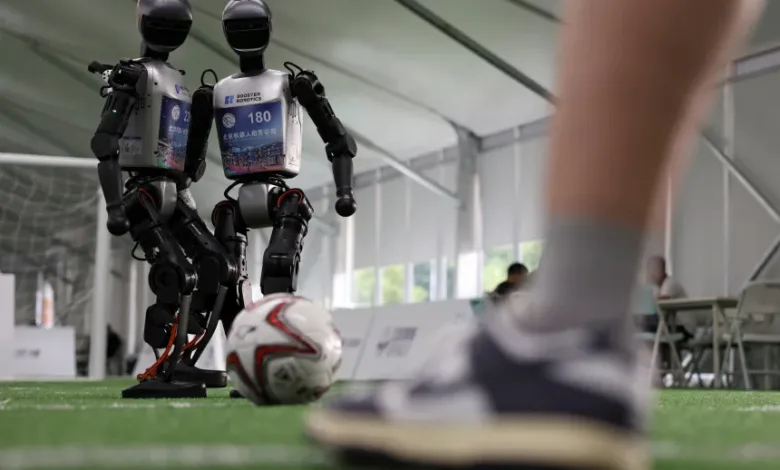At China’s Humanoid Olympics, Robots Stumble Toward the Future

▼ Summary
– **Inaugural World Humanoid Robot Games showcased China’s robotics ambitions**, blending high-tech displays with comical robot mishaps like soccer pileups and mid-race collapses.
– **280 teams from 16 countries competed in 26 events**, ranging from athletics to practical tasks, highlighting both progress and limitations in humanoid robotics.
– **China’s Unitree H1 robot won gold in the 1,500-meter race**, demonstrating advancements in balance and autonomy despite frequent technical failures.
– **China is investing heavily in robotics and AI** to address an aging population and compete globally, with events like this driving innovation and domestic industry growth.
– **Practical applications were emphasized**, as competitions like soccer tested skills transferable to real-world uses in factories, hospitals, and homes.
BEIJING – The scene inside the National Speed Skating Oval this past weekend was a curious mix of high-technology and physical comedy. In one moment, a bipedal robot would sprint down a track with surprising speed. In the next, a soccer match would devolve into a pileup of tangled metallic limbs, requiring human handlers to step in. This was the inaugural World Humanoid Robot Games, a three-day event designed to showcase China’s significant ambitions in robotics and artificial intelligence.
The event brought together 280 teams from 16 countries, including squads from the United States, Germany, and Brazil, to compete in 26 different events. These ranged from traditional athletic contests like track and field and kickboxing to more practical, service-oriented challenges such as sorting medicine and performing cleaning tasks. The competition served as a very public and often unglamorous progress report on the state of humanoid robotics.
A Test of Skill and Stability
While the opening ceremony featured impressively choreographed robot dance troupes and even martial arts displays, the competitive events revealed the current limitations of the technology. During a 1,500-meter race, one robot collapsed abruptly mid-stride, drawing a mix of gasps and cheers from the crowd. In a five-a-side soccer game, multiple robots clumsily converged on the ball, tumbling over one another in a heap. One team even had to withdraw from a race when its robot’s head fell off.
Yet, these stumbles were punctuated by moments of genuine progress. Many robots that fell were able to right themselves without assistance, a complex feat of balance and mechanics that drew applause from spectators. China’s own Unitree H1 robot clinched a gold medal in the 1,500-meter race, navigating the track with a steady, determined gait.
For the participants, many of whom represented universities and research institutions, the games were less about winning and more about pushing the boundaries of the technology in a real-world setting.
“You can test a lot of interesting new and exciting approaches in this contest,” said Max Polter, a member of the HTWK Robots football team from Germany. “If we try something and it doesn’t work, we lose the game. That’s sad but it is better than investing a lot of money into a product that failed.”
China’s Broader Ambition
The games are a component of a much larger national strategy. China is investing billions into robotics and AI, driven by the dual pressures of a rapidly aging population and intense technological competition with the United States. Beijing has identified humanoid robotics as a key strategic industry, framing events like these to spur innovation and capture public imagination.
This push is evident in the supply chain. Most of the competing teams, regardless of their country of origin, used hardware from Chinese manufacturers like Booster Robotics, Unitree, and Fourier Intelligence. This reflects a deliberate effort by the Chinese government to build a robust domestic industry that can supply the world.
Organizers and commentators stressed the practical applications behind the seemingly playful competitions. A soccer match, for instance, is an exercise in programming coordinated, multi-agent systems, a skill directly transferable to managing fleets of robots on a factory assembly line. Li Zhiqi, an official with the Beijing municipal government, noted the goal is to “advance humanoid robots from the laboratory into real-world applications in factories, hospitals, homes and other scenarios.”
The event also signals a growing public fascination with the technology in China. Analysts at Morgan Stanley recently noted a surge in attendance at robotics conferences, suggesting that the concept of “embodied intelligence” has been embraced by the general public, not just government officials. As robots continue to walk, run, and occasionally fall on the public stage, this event in Beijing made it clear that their slow march into our daily lives is well underway.





